Season’s greetings!
It holiday’s season again.
So do, google doodle.
They come up with a serial doodles.
I will update the doodle as it changes.
Happy holidays! Cheers!
so what’s next?…
Season’s greetings!
It holiday’s season again.
So do, google doodle.
They come up with a serial doodles.
I will update the doodle as it changes.
Happy holidays! Cheers!
so what’s next?…

Oscar

Elmo

Count Von Count

All Characters
everyone love Sesame Street.
nice doodle from Google in celebrating 40th anniversary of Sesame Street.
i will update as the doodle changes.
love it!
A short and brief history of Google Development in 2 minutes and 13 seconds.
Developed by a googler of Google’s London Office in celebration of Google’s 11th Anniversary in last September 2009.

it been a while google has not come out with a doodle.
today google is barcode.
![barcode09[1] barcode09[1]](http://gotbetterideaz.com/wp-content/uploads/2009/10/barcode091.gif)
i think it spell g-o-o-g-l-e in barcode.

The original design Galileo came up with in 1609 is commonly called a Galilean telescope. It uses a convex objective lens and a concave eyepiece lens. Galilean telescopes produce upright images.
Galileo’s best telescope magnified objects about 30 times. Because of flaws in its design, such as the shape of the lens, the images were blurry and distorted. Despite these flaws, the telescope was still good enough for Galileo to explore the sky. The Galilean telescope could view the phases of Venus, and was the first to see craters on the Moon and four moons orbiting Jupiter. – via source
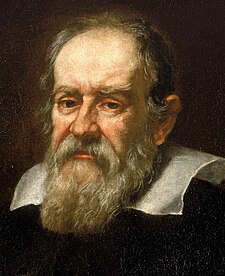 Galileo Galilei (15 February 1564[2] – 8 January 1642)[1][3] was an Italian physicist, mathematician, astronomer, and philosopher who played a major role in the Scientific Revolution. His achievements include improvements to the telescope and consequent astronomical observations, and support for Copernicanism. Galileo has been called the “father of modern observational astronomy,”[4] the “father of modern physics,”[5] the “father of science,”[5] and “the Father of Modern Science.”[6] Stephen Hawking says, “Galileo, perhaps more than any other single person, was responsible for the birth of modern science.”[7] – via source
Galileo Galilei (15 February 1564[2] – 8 January 1642)[1][3] was an Italian physicist, mathematician, astronomer, and philosopher who played a major role in the Scientific Revolution. His achievements include improvements to the telescope and consequent astronomical observations, and support for Copernicanism. Galileo has been called the “father of modern observational astronomy,”[4] the “father of modern physics,”[5] the “father of science,”[5] and “the Father of Modern Science.”[6] Stephen Hawking says, “Galileo, perhaps more than any other single person, was responsible for the birth of modern science.”[7] – via source
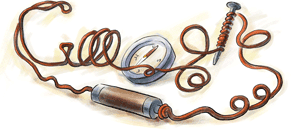
 Hans Christian Ørsted (14 August 1777 – 9 March 1851) was a Danish physicist and chemist who is best known for discovering that electric currents can create magnetic fields, which is an important part of Electromagnetism. He shaped post-Kantian philosophy and advances in science throughout the late nineteenth century. He was also the first modern thinker to explicitly describe and name the thought experiment.
Hans Christian Ørsted (14 August 1777 – 9 March 1851) was a Danish physicist and chemist who is best known for discovering that electric currents can create magnetic fields, which is an important part of Electromagnetism. He shaped post-Kantian philosophy and advances in science throughout the late nineteenth century. He was also the first modern thinker to explicitly describe and name the thought experiment.
Read more at http://en.wikipedia.org/wiki/Hans_Christian_Ørsted

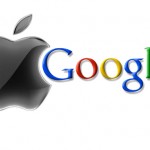 Over the past three decades, a few titanic rivalries have defined the technology industry’s megatrends, ultimately determining which products eventually end up in consumers’ and companies’ hands.
Over the past three decades, a few titanic rivalries have defined the technology industry’s megatrends, ultimately determining which products eventually end up in consumers’ and companies’ hands.
Now, adding to the annals of competition that include Microsoft’s (MSFT) clashes with Apple (AAPL) in the ’80s, IBM (IBM) in the ’90s, and Google (GOOG) in this decade, the new defining rivalry in tech may be between Google and Apple. Google CEO Eric Schmidt‘s resignation from Apple’s board on Aug. 3 highlights the degree to which these companies are more foe than friend.
By most measures—revenue growth, stock appreciation, magazine cover stories—Apple and Google are the two most successful and influential companies of the past decade. Yet their visions for how the computer industry will shape up in the next one could hardly diverge more. “They are both very innovative companies with very different ways of innovating,” says Henry Chesbrough, director of the Center for Open Innovation at the University of California at Berkeley. “They’ve both been very successful, but there’s a contest of different approaches going on here.”
Read more : http://www.businessweek.com/technology/content/aug2009/tc2009084_007016.htm
Great Doodle from Google for the Comic Convention 2009 (ComicCon 09).
This annualy event is held at San Diego Convention Center, San Diego, California. (Click Here for direction)
This event bring together all comic fan from all over America and also from all over the world.
The event held on 23~26 July 2009.
For more detail click on the ComicCon logo
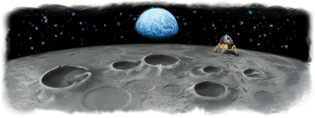
remembering the moon landing the 40th anniversary on 20th July 1969.
how far could man explore the universe by the century?
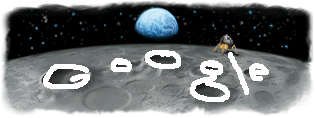
can you spot the Google word?
read more about moon landing here
Igor Fyodorovich Stravinsky (Russian: ????? ????????? ???????????, Igor’ Fjodorovi? Stravinskij) (17 June[O.S. 5 June] 1882 – 6 April 1971) was a Russian composer, pianist, and conductor, widely acknowledged as one of the most important and influential composers of 20th century music.[1][2][3] He was a quintessentiallycosmopolitan Russian who was named by Time magazine as one of the 100 most influential people of the century.[4] In addition to the recognition he received for his compositions, he also achieved fame as a pianist and a conductor, often at the premieres of his works.
[source]

Google Search : UEFA Champions League 2009
the heat is in the air.
who’s going to win? and who’s going to perish?
UEFA Champions League 2009 final.
Barcelona vs Manchester United.
Final – 27 May 2009 20:45 (CET) – Stadio Olimpico – Rome – Italy

May 19, 2009—Meet “Ida,” the small “missing link” found in Germany that’s created a big media splash and will likely continue to make waves among those who study human origins.
In a new book, documentary, and promotional Web site, paleontologist Jorn Hurum, who led the team that analyzed the 47-million-year-old fossil seen above, suggests Ida is a critical missing-link species in primate evolution (interactive guide to human evolutionfrom National Geographic magazine).
(Among the team members was University of Michigan paleontologist Philip Gingerich, a member of theCommittee for Research and Exploration of the National Geographic Society, which owns National Geographic News.)
The fossil, he says, bridges the evolutionary split between higher primates such as monkeys, apes, and humans and their more distant relatives such as lemurs.
“This is the first link to all humans,” Hurum, of the Natural History Museum in Oslo, Norway, said in a statement. Ida represents “the closest thing we can get to a direct ancestor.”
Ida, properly known as Darwinius masillae, has a unique anatomy. The lemur-like skeleton features primate-like characteristics, including grasping hands, opposable thumbs, clawless digits with nails, and relatively short limbs. …read more at news.nationalgeographic.com